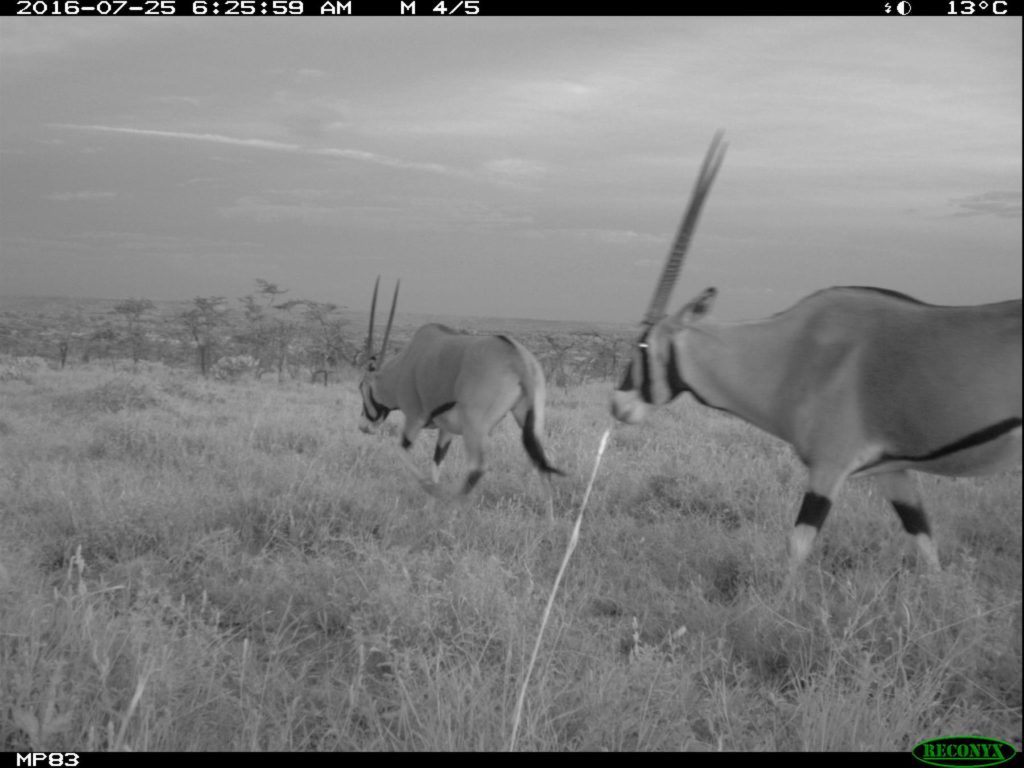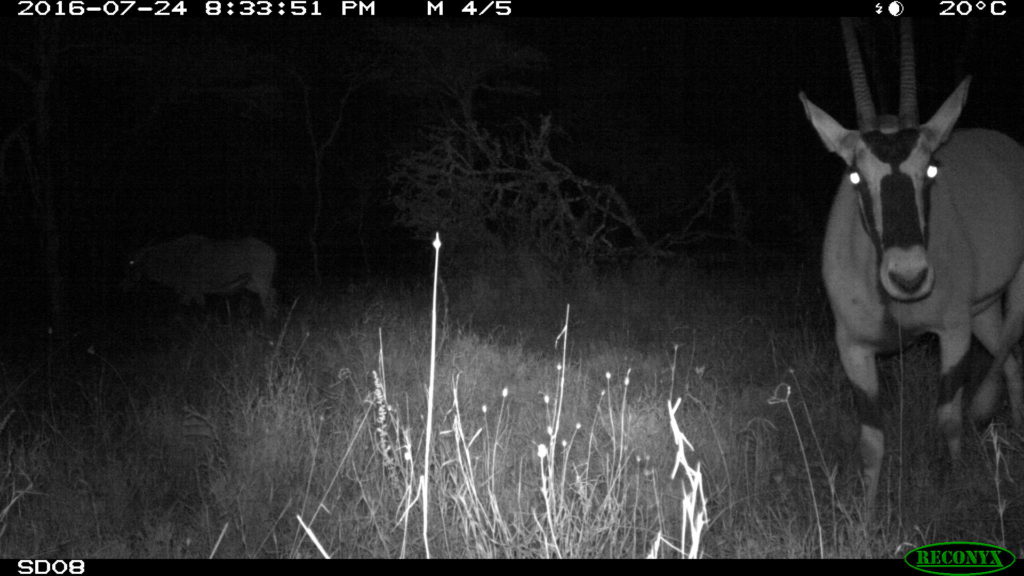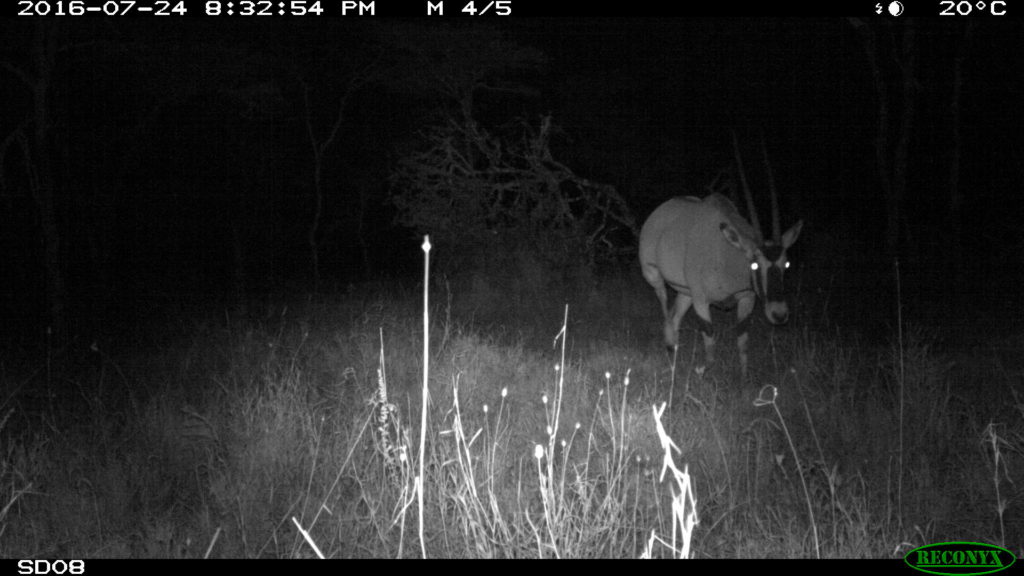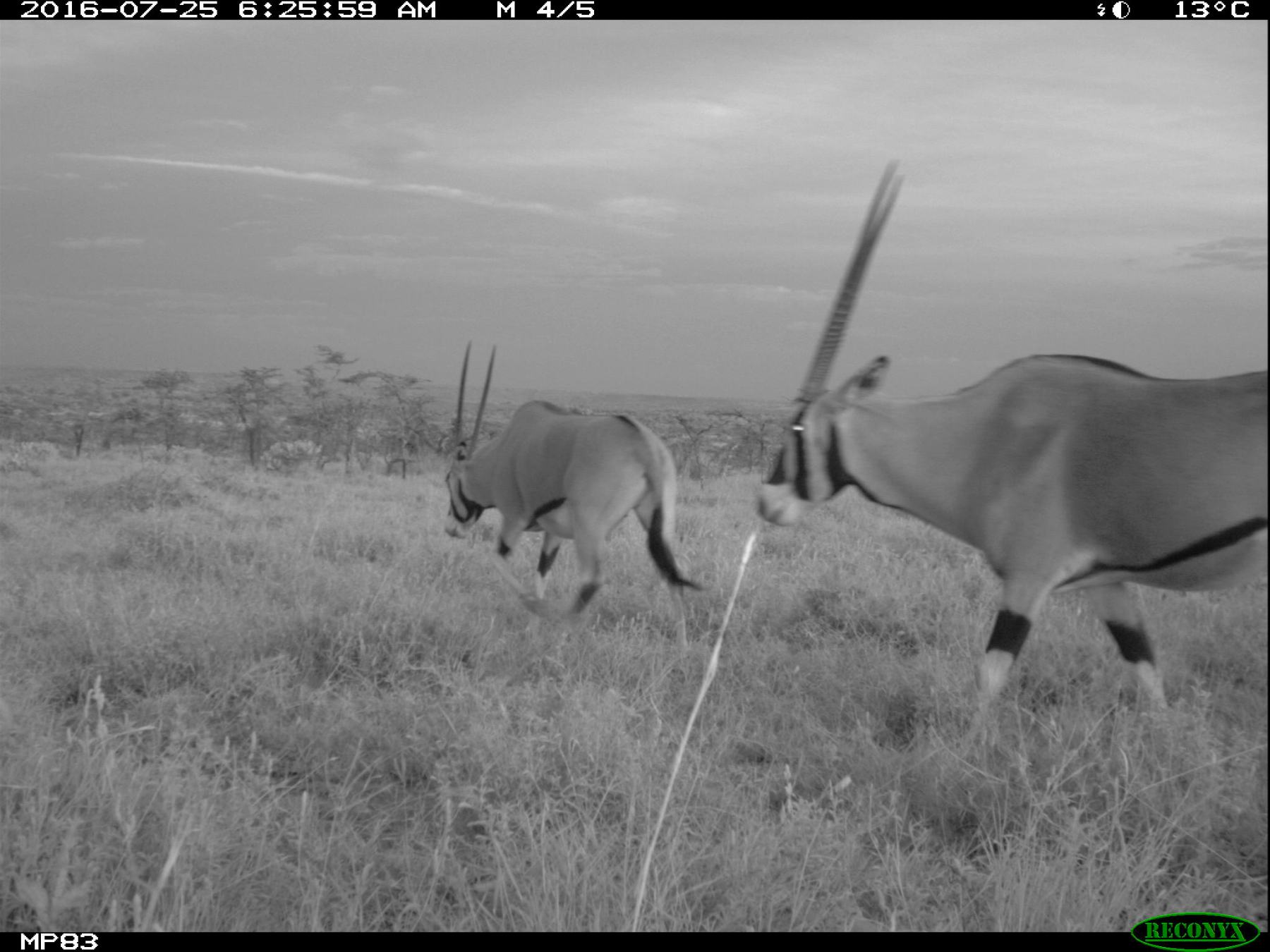This striking mammal is the Beisa oryx, found only in Kenya, Ethiopia, South Sudan, and Tanzania. When these photos were taken, the beisa oryx was not an endangered species, but since we started implementing camera trap research into schools in Kenya, this species has now made it to endangered status on the IUCN red list. In fact, my paper that just came out a few months ago needs to be updated; with the addition of the Beisa oryx, students now photographed 6 endangered species instead of 5. (Read “Do Kids Make Good Citizen Scientists? Discoveries from eMammal Camera Traps Around the World” for more.)

If you look on IUCN’s website, you’ll see that there is no systematic monitoring scheme. This is not uncommon because there are so many species that need help and there is currently not enough time or resources. There are many species that are “data deficient,” meaning we just don’t even have enough data on them to really know what to do. When I searched “Beisa oryx” in Google Scholar, I was surprised to find very few papers on this species. I’m constantly surprised by how much we don’t know. Especially in a place like Kenya, where it is easy to do research compared to other countries, there is a lot of good research that already takes place, and these animals are easy to see on the savanna.

It’s really hard to fund regular, ole monitoring projects, but it’s super important because when animals decline, you can at least look back to see where they used to be and estimate how many there were (if your set up allows you to). When working with the schools in Kenya, we didn’t expect to photograph endangered species, but now we have, and data are valuable in studying this species, which we seem to know little about. Moreover, like a lot of large mammals in Kenya, the range of the Beisa oryx occurs outside largely outside of protected areas (over 80% for this species), so we need places like schools to run cameras to monitor populations.
The biggest threats of the Beisa oryx include hunting and the loss of habitat from encroachment by people and livestock. There are approximately 12,000 individuals left. By working with kids, we also have the hope of passing these conservation messages on to help prevent further declines.

For more on animals photographed on school camera traps in Kenya, read “17 Amazing Camera Trap Photos from Kenya Taken By Kids.”
Love this post? Share it with friends!




